– Regent Park, Toronto: A Story of Commitment, Commonality, and Collectivity –
Growing the “Garden City”
At the beginning of the 20th Century, Regent Park had been known as Cabbagetown, a name now associated with the neighbourhood due North. But it wasn’t until 1948 that city officials envisioned a new urban design for this 69-acre lot. Inspired by the idealized “Garden City” movement, the area was to be dismantled, leaving behind only remnants of two of its original streets – Regent Street and Park Street. Thus the name Regent Park came into existence, a new name for a postwar modernist neighbourhood.
Less than two decades later, Regent Park began to show deterioration. What had been Toronto’s first large experiment in public housing, no longer held the promise it had once before. By the 1970s, city officials began to discuss options for improving Regent Park, but by then the media had already given the area a grim reputation. Luckily, in 1995, motions were made for the revitalization of Regent Parks. A group of passionate residents, organized and chaired by former mayor John Sewell, took control of the situation and set-up meetings with the Metro Toronto Housing Authority and Provincial Ministry of Housing to talk about what should be done.
Defining Regent Park’s Guiding Principles
The 1990s and early 2000s brought turbulent times for the revitalization program in Regent Park. During the greater Toronto’s merger, which amalgamated several small municipalities into one massive district, many lost interest in Regent Park. However, by 2002 the City of Toronto created the Toronto Community Corporation (TCH) to manage Toronto’s public housing stock of 58,000 units, 2083 of which belonged to Regent Park. As a result, several extensive community consultations were held and the council adopted a set of twelve principles that would redefine Regent Park for Toronto.
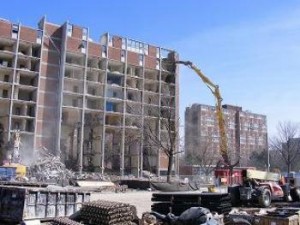
The Social Development Plan
The twelve guiding principles became the foundation for the TCH’s Social Development Plan. Ideally, this plan was instated to foster social cohesion and inclusion, meaning Regent Park was to provide shopping and working opportunities in their own community. Businesses that moved into the area were urged to hire from within the community. Additionally, the City Council passed a zoning by-law for the redevelopment of the neighbourhood’s 69-acres, consisting of over 5,000 housing units.
TCH’s Request for Qualifications and Request for Proposal structures helped create a public-private partnership between TCH and a developer, which would assistant in transforming Regent Park into a mixed-use, mixed-income community. The Daniels Corporations eventually signed a public-private partnership with TCH and the City of Toronto for Phase One (and a Right of First Opportunity for Phase Two) of the revitalization project in Regent Park.
Christian Resource Centre Fundraising
The Christian Resource Centre’s Board of Directors felt that it would be beneficial to use the revitalization project as an opportunity to rebuild the neighbourhood. Through fundraising, the Christian Resource Centre gathered enough money to construct the 40 Oaks building, a community hub with housing units for over 90 people. Since being built, 40 Oaks has provided an array of community activities, each designed to achieve social cohesion. The notion of changing the name of Regent Park had been tossed around during this time, but never came into effect.
What It Means to Live in Regent Park
Regent Park has always been culturally diverse and heavily involved in the arts. In fact, the neighbourhood’s strong presence of facilities devoted to the arts can be largely attributed to the non-profit Artscape, a partner of the community. For instance, Regent Park’s 60,000 square foot Daniels Spectrum has five performance areas, an open lobby, and café with free wifi, making it an incredible place for performances and community members to meet and mingle. Apart from theatres, venues, and galleries, all of which encourage the community to embrace cultural expression, artist tendencies can be found at random on the streets of Regent Park.
The billion-dollar revitalization of Regent Park has truly reinvented the neighbourhood’s image by discrediting its long lived stigma as a place to avoid. Now abundant with restaurants, businesses, and condominiums, Regent Park is more than just Canada’s oldest and largest social housing project – it is a thriving, sustainable residential community that Toronto is proud to have.
 Cabbagetown Info Events, reviews and what's happening in Cabbagetown, Toronto
Cabbagetown Info Events, reviews and what's happening in Cabbagetown, Toronto
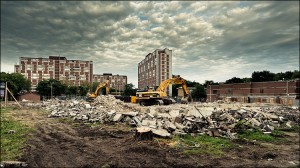
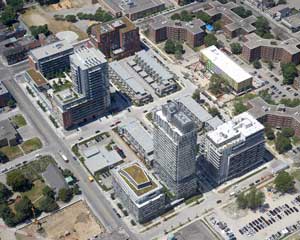
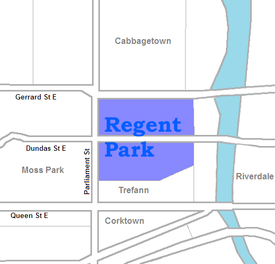
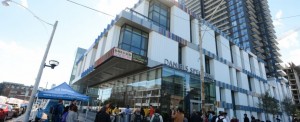


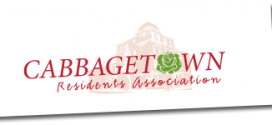
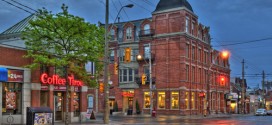
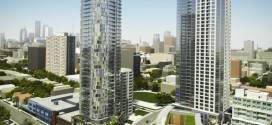
[…] Nelson Mandela Park Public School reopened its doors March 19th. As another addition of the revitalization of Regent Park, the changes made to the beautiful beaux-arts structure are congruent with several of the other […]